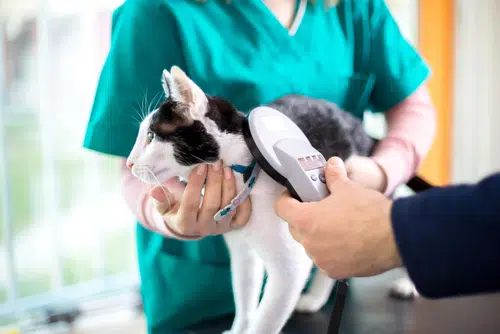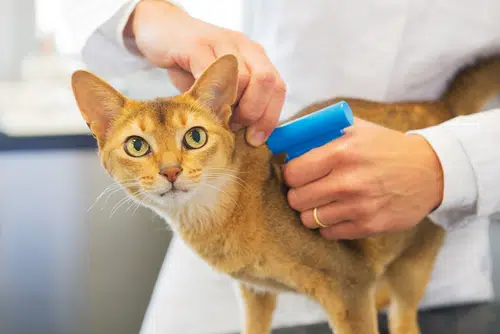Home » Blog » Pet » Pet Health & Safety » What You Need to Know About Microchipping Your Cat
Categories
Tags
animal welfare
breed profile
buying a car
buying a pet
Car
car accessories
car care
car features
car insurance
Car safety
car sales
car service
cat
cat behaviour
cat body language
Cat Breeds
cat food
cat insurance
comprehensive car insurance
Dog
Dog Behaviour
dog body language
Dog Breeds
dog food
Dog Insurance
dog training
eco friendly cars
Kitten
New Car
pet accessories
pet activities
Pet Adoption
pet breeders
pet days of the year
pet fun stuff
Pet Health
pet insurance
pet parenting
Pet Safety
pet services
Puppy
rescue pets
road safety
road trip
safe driving
Recent Blog:
Facebook Posts
4 days ago
Are intestinal worms setting up camp in your dog’s gut without paying rent? Here’s how to spot the main culprits and get rid of them too:![]()
![]() Preventing, Identifying and Treating Intestinal Worms in Dogs - bit.ly/43YjCKu
... See MoreSee Less
Preventing, Identifying and Treating Intestinal Worms in Dogs - bit.ly/43YjCKu
... See MoreSee Less
Preventing, Identifying and Treating Intestinal Worms in Dogs
www.pd.com.au
Intestinal worms, such as roundworms in dogs are one of the least glamorous topics on the planet. These intestinal parasites that basically use our dogs
PD Insurance
with Dogs West.
6 days ago
We enjoyed meeting #breeders #doglovers and members at the Dogs West Open Day. Special thanks to our partner Dogs West for organising an incredible event. There is still time to enter our pawsome competition. Click here for details: bit.ly/4covyce![]() #PDinsurance #dogswestopenday #dogswest
... See MoreSee Less
#PDinsurance #dogswestopenday #dogswest
... See MoreSee Less
6 days ago
Did you know? The Manx is a breed that is known for its lack of a tail, which is caused by a genetic mutation.
... See MoreSee Less
If you’re a cat owner, you’ve probably wondered about the need to microchip a cat. If you’ve done it, maybe you found yourself wondering about whether they’re necessary or helpful. Or, perhaps you haven’t but the question of whether the procedure hurts or how much it costs has crossed your mind.
Wonder no more! Here’s everything Australians should know about microchipping their cats.
How does a microchip for a cat work?
A microchip, as the name suggests, is just a very small computer chip. This can store data like your cat’s name, your address, and your phone number. The microchip is placed under your cat’s skin, between the shoulder blades. The data that the chip holds can then be read by a scanner held against the cat’s neck.
Is it painful to microchip a cat?
Implanting a microchip is a quick and mostly painless process. The chip is normally implanted by your vet, using an injection. Your cat won’t need any anaesthetic, and though they’ll feel a sting when the needle goes through the skin, it doesn’t hurt more than any other jab or vaccine. The chip really is small!
If you’re worried about it, you may take up option to microchip a cat during a spay or neuter procedure. This means your cat can be desexed and microchipped all at once, saving the hassle of an extra vet appointment.
Is it required to microchip cats in Australia?
Honestly, it depends on where you live. Though we’d recommend it wherever you are in Australia.
Legally speaking though in most states and territories in Australia, it’s compulsory to microchip your cat. The Northern Territory and South Australia are the two exceptions to that rule.
However, the exact legislation varies by area. Each state or territory will have legislation setting out the age by which cats must be microchipped, as well as the information required on the chip.

The pros of microchipping a cat
It’s a situation we don’t like to think about, but cats are roamers and often get lost. They can easily jump over gates and climb trees, and even get lost on holiday roadtrips.
If you microchip a cat, you have better chances of finding them if they get lost. Normally the first thing people do if they find a lost pet is check for a microchip at a vet. And if your cat ends up at the shelter somehow, a microchip makes it easy to prove ownership. This means you’re likely to get your cat back sooner.
PD did an interview in 2023 about keeping dogs and cats from wandering with Dr Imogen Bassett, Principal Advisor for Biosecurity at the Auckland Council in New Zealand. She told us that after the 2011 Christchurch earthquakes, “85% of microchipped pets were reunited with their owners, compared with only 15% of non-chipped pets.”
Not convinced? Science says so too. A recent American study showed that microchipped cats were 20 times more likely to be returned to their owners than cats without microchips. Those are pretty good odds, don’t you think?
Additionally, it’s quite hard to tamper with a microchip. If you happen to have a rare purebred cat and he or she is stolen, it’s not hard to remove collars, tags, or other identifying information. But not with a microchip. The information is securely stored and can only be updated after going through stringent verification checks.
Microchipping is a once-off procedure that keeps your cat’s information accessible for the rest of their life. It’s very rare to need to replace a microchip.
The cons of microchips
The cons of microchipping a cat are few and far between.
There are some beliefs that a microchip is a GPS. This isn’t true, and unfortunately means you can’t “track” your cat via the chip. So, there’s no way to know if they’re visiting the neighbours at night. Sorry!
Most of the other concerns related to microchipping a cat are health-related. It’s highly unlikely your cat will have any kind of adverse reaction to a microchip at all. At the very worst, there might be some slight inflammation around the injection site.
To put your mind at ease, the British Small Animal Veterinary Association (BSAVA) has a database which records adverse reactions to microchips. Of over four million animals microchipped, less than 400 were reported to have adverse reactions. And of the cases that are reported, the majority relate to the microchip moving or migrating away from the original site of injection. Which usually causes no issues and the chip can still be scanned.
So, it’s a very safe procedure. Personally, we think the pros considerably outweigh the cons.
Cover your cat for all kinds
Pet insurance is one of those things that you’re unsure how much you’ll use until you need it the first time. So many of our customers have claimed back large amounts of $$$ in their first six months, and continue to claim throughout the ensuing years.
Allergies, accidents, bite wounds and illnesses are up there in our most common claims.
Unlike making an appointment to microchip a cat, they’re medical issues you can’t plan for.
Share On:




